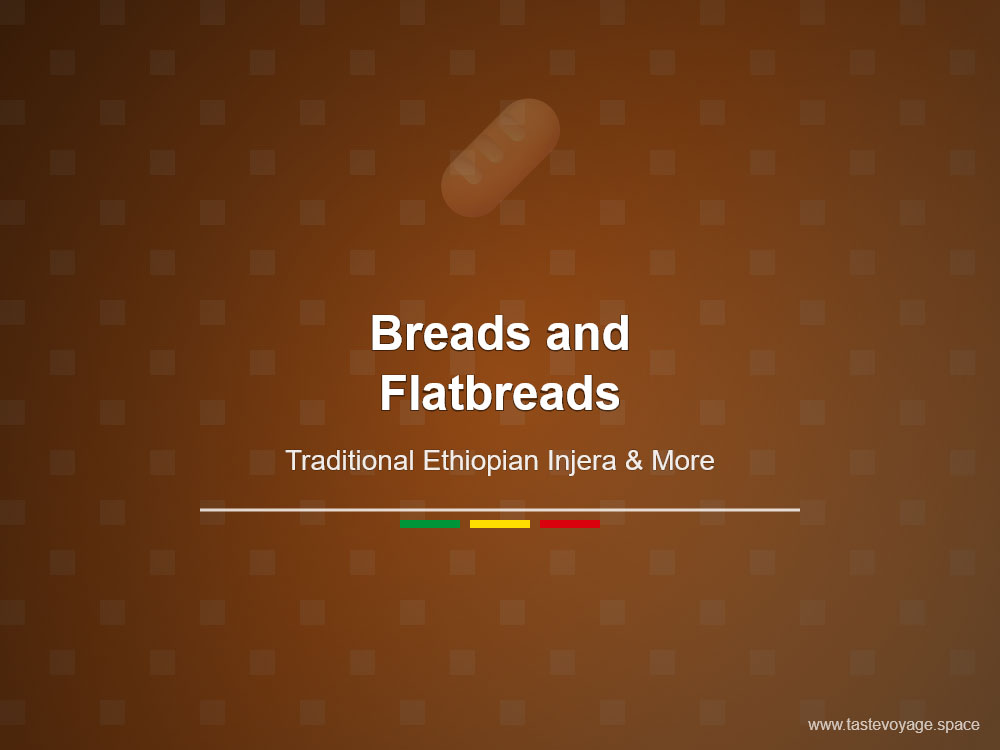Master Ethiopian Bread Making: Easy Tips & Techniques
Travel the World Through Food >> Breads and Flatbreads>>Ethiopian Cuisine>> Master Ethiopian Bread Making: Easy Tips & Techniques
Master Ethiopian Bread Making: Easy Tips & Techniques
Discovering the Rich Cultural Heritage of Ethiopian Bread
Ethiopian bread, known locally as injera, holds a special place in the heart of Ethiopian Cuisine. It is much more than just a staple food; it is a symbol of community, tradition, and shared heritage. Made from teff flour, injera’s unique texture and tangy flavor evoke a sense of history that spans centuries. Its significance extends beyond the dining table, representing unity and hospitality in Ethiopian culture.
The Cultural Significance of Injera
Injera is deeply woven into Ethiopia’s social fabric. It serves as the foundation of many traditional meals, often used as both a plate and utensil. Diners tear off a piece of injera and use it to scoop up stews, vegetables, and lentils. This communal style of eating fosters closeness and togetherness among family and friends.
Ethiopian culture celebrates injera during special occasions and everyday meals alike. It is customary to prepare and share it with respect and care, reflecting values of hospitality and community bonding. The process of making injera is considered an art form that connects generations, passing down cultural knowledge and culinary skills.
The Culinary Significance of Ethiopian Bread
Ethiopian bread is celebrated for its unique taste and texture. The fermentation process gives injera its characteristic sourness, which balances well with the rich flavors of accompanying dishes. Its porous surface acts as a perfect vessel for absorbing flavors, making every bite an experience of harmony and richness.
Injera’s versatility enhances its culinary importance. It pairs beautifully with Spicy stews known as wats, vegetable dishes, and even salads. Its fluffy yet slightly spongy texture ensures that it can hold a variety of ingredients, elevating the entire meal. Moreover, the use of teff flour—a gluten-free grain—makes injera a nutritious choice, rich in protein, fiber, and minerals.
The Artistic Aspect of Injera Making
While this post does not include cooking instructions, it is worth noting that the process of making injera involves skill and patience. Traditionally, the batter ferments over several days, developing its signature tang and airy quality. The batter is then poured onto a hot griddle, carefully cooked to achieve its distinctive texture.
This craftsmanship embodies the artistry of Ethiopian culinary tradition. Each batch of injera reflects the maker’s dedication and cultural pride. The process emphasizes mindfulness and respect for the ingredients, highlighting the cultural importance of each step.
Embracing Ethiopian Bread in Your Culinary Journey
Understanding the cultural and culinary significance of injera opens a window into Ethiopian history and social life. This bread is more than just food; it is a bridge that connects people through shared traditions and flavors. Appreciating its cultural value allows for a deeper respect of Ethiopian cuisine’s beauty and richness.
Whether you are exploring new culinary horizons or seeking a meaningful connection to diverse food traditions, mastering the basics of Ethiopian bread making is a rewarding journey. It invites you to honor centuries of cultural history, celebrate community, and enjoy the unique flavors that make injera truly special.
